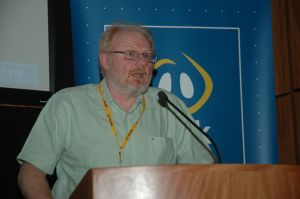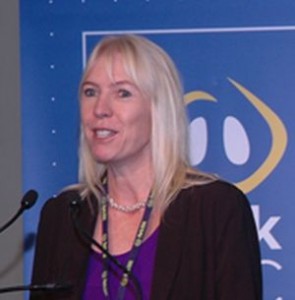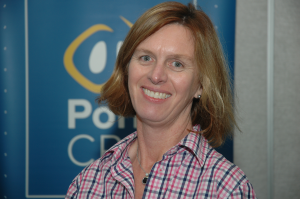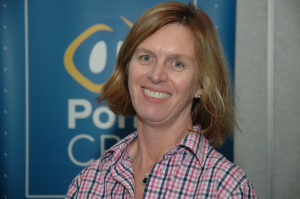Program Leader
Heather Channon
Subprogram Leaders
Frank Dunshea
 Subprogram 3A: Optimal pork quality for multiple markets
Subprogram 3A: Optimal pork quality for multiple markets
Following training at La Trobe and Cornell Universities, Professor Dunshea worked for the Victorian DPI at the Werribee Pig Research and Training Centre for 17 years, before joining the University of Melbourne as Chair of Agriculture in 2006.
Much of his research has focussed on the effects of metabolism modifiers on nutrient requirements. He led a large team that conducted the efficacy studies leading to the registration and commercialisation of immunocastration and then researched the interaction of immunocastration with metabolic modifiers and the impact of immunocastration on nutrient requirements.
Much of Dunshea’s research was conducted by PhD students under his tutelage and three of the students (Darryl D’Souza, Ewa Ostrowska and Cherie Collins) he has supervised or co-supervised have been awarded the Batterham Memorial Award, a prestigious award conferred by the Australasian Pig Science Association in memory of the late Dr Ted Batterham. The Award is made to a young scientist within 10 years of graduation and is conferred with the aim to “stimulate and develop innovation in the pig industry”. Their research showed how dietary Mg could block the effects of stressors around slaughter, leading to the commercial use of dietary Mg supplements to improve meat quality.
Master manipulator
Dunshea’s team also investigated nutritional means of manipulating growth and pork quality, including the use of dietary lecithin to reduce collagen cross-linking and improve tenderness. Dunshea’s group also conducted the first studies demonstrating dietary conjugated linoleic acid (CLA) effects on nutrient use, including tissue accretion rates in pigs.
Dunshea is a respected research leader in the swine and other industries and for the duration (from 2005-2011) of the first Pork Co-operative Research Centre (CRC) he was Program Leader for the whole herd feed efficiency program. The original Pork CRC consisted of researchers from 30 organisations and companies and together with Federal Government Funding represented an $81 million investment over seven years (commencing in 2005). The research program that Dunshea led comprised seven substantial sub-programs, accounting for more than 60% of the Pork CRC budget. The nutrition and other research outputs from the initial CRC helped reposition the Australian pork industry to be internationally competitive and re-established a strong swine and collaborative research capability in Australia. Dunshea has edited a special issue of Animal Production Science in which many of these findings were published.
Winning bidding
In November, 2010 Dunshea was a member of the successful re-bid team that secured an additional $130 million investment for the CRC for High Integrity Pork for eight years from July, 2011. The new CRC consists of researchers from 41 organisations and companies. Dunshea leads Subprogram 3A (‘Optimal pork quality for multiple Markets’) in the new CRC, as well as chairing the education committee. Research conducted in this Subprogram, largely as part of Heather Channon’s PhD, has identified optimal pathways to ensure pork eating quality and will provide pork producers and supply chains with the tools to guarantee consistent eating quality. Ultimately, this will assist in developing new markets for Australian Pork while ensuring current markets are maintained and ideally enhanced.
Just rewards
Innovation has always been integral to Dunshea’s research and, in recognition of this, in 2004 he was awarded the Daniel McAlpine Outstanding Achievement Award for Innovation in Agricultural Research for his biomedical and functional foods research. In December, 2007 he was made a Fellow of the Nutrition Society of Australia. In 2009 he was elected to the Australian Academy of Science’s National Committee for Nutrition, and was awarded the American Society of Animal Science Award (ASAS) for Animal Growth and Development.
In 2013 Dunshea travelled to the US to receive the Nonruminant Nutrition Research Award, presented by ASAS and the American Feed Industry Association. Dunshea is the first recipient from the Southern Hemisphere and only the third outside North America to receive this prestigious award, sponsored by the American Feed Industry Association as part of its continuing awards program dating back to 1948.
Heads up
Dunshea is Chair of Agriculture at the University of Melbourne and, until recently, was the Head of the Department of Agriculture and Food Systems for six years. In September 2013 he stepped down from his role as Head of Department to take up a position as Director of the ARC Industrial Transformation Research Hub focused on “Unlocking the Food Value Chain: Australian food industry transformation for ASEAN markets”. A joint project between the ARC, The University of Melbourne and Mondelez Australia (formally Kraft Foods), it will initially focus on confectionary, but it is envisaged that the learnings will have flow-on effects to other food industries, including pork.
Contact details: Professor Frank R. Dunshea, email fdunshea@unimelb.edu.au
Updated March 2014, from an original article published APN August 2013
Karen Charlton
 Subprogram 3B: Inherent properties of Australian pork to enhance consumer health
Subprogram 3B: Inherent properties of Australian pork to enhance consumer health
Pork CRC Sub program 3B leader, Associate Professor Karen Charlton of The University of Wollongong, is an Accredited Practising Dietitian with two Masters degrees (Health Sciences and Epidemiology) and a PhD.
She teaches in the Public Health program at the University and her research background is in human nutrition, epidemiology and public health.
Karen emigrated to Australia with her husband and two young children in December 2006. They now also have a 3yo Australian-born son. Karen qualified as a dietitian in the UK in 1990, but spent most of her career in South Africa.
Skinny cattle
Her childhood was spent in Botswana and Zambia, where she experienced first-hand the ravages of drought and extreme climatic conditions on agriculture, farming and food insecurity. She does not recall seeing many pigs roaming the African bush, but claims very skinny cattle on the side of the unfenced roads were a common sight!
Karen describes herself as an academic with a broad public health background, particularly related to dietary and lifestyle interventions across the lifespan, but with a particular ‘soft spot’ for research on issues of public health importance that have policy implications.
BP fuel
For example, her doctoral work demonstrated that salt reduction of commonly consumed foods in South Africa lowered blood pressure by a clinically significant magnitude. On a population level, this would result in 20% reduction in deaths attributed to high BP, preventing more than 9000 deaths/year. Largely as a result of her published findings and collaborative work with the food industry to develop reduced salt bread, margarine and flavourants/seasonings, along with lobbying and advocacy, the South African government is the first, globally, to pass legislation mandating salt target levels in a variety of foods. Since coming to Australia, Karen has directed her attention on salt research to the prevention of iodine deficiency in pregnant and lactating women. She was surprised to learn that, until 2009, Australia was one of the few countries without an iodine fortification programme in place.
Healthy ageing
Another keen research interest relates to the role of nutrition on healthy ageing – both in terms of physical and cognitive functioning. Karen continues to call for better identification of malnutrition in older Australians, both in hospital and community (GP, aged care facilities) settings.
Karen has a Pork CRC supported innovation project underway that aims to investigate the role of pork on muscle mass, strength and cognition in older people living in low care residential facilities. She works closely with the Meals on Wheels Association and the Department of Veteran Affairs (NSW) to develop appropriate interventions to improve health outcomes of older adults in the community.
She is well connected to the nutrition community in Australia and internationally. She has work experience in developing and developed country settings (she also worked for a stint as a clinical dietitian in the British National Health Service) and currently serves as a Council member for the Nutrition Society of Australia (NSA) and chairperson of the Wollongong NSA branch.
Fishy vego
So how does a fish eating vegetarian (pesco-lacto-ovo is the correct terminology) become leader of a Pork CRC sub program that is looking for the inherent health benefits of fresh pork? Karen’s answer is that she likes working in areas where nutrition science is translated into practice. She has been involved in developing dietary guidelines in South Africa and Australia, with her role was looking at the most up-to-date evidence and applying this to meaningful messages that can guide the public in their dietary choices.
Pork is a core food in the Australian cuisine and good quality science is needed to further understand its role in human health, according to Karen. She believes there is considerable information available about other meats and protein sources, but pork has been little-researched until now.
In the first Pork CRC funding period, Karen was Chief Investigator on a project that investigated the effects of pork on appetite hormone production and satiety (feeling of fullness). The study, published in the prestigious international journal Appetite in 2010, found pork consumption resulted in a greater secretion of peptide Y-Y (a hormone that increases satiety), compared to meals containing chicken or beef. The study positioned pork as similar to the other two meats for its ability to satisfy hunger.
Childish consumption
Karen recently completed an innovation study for Pork CRC that describes pork consumption patterns of Australian children. The secondary analysis of the 2007 Australian National Children’s Nutrition and Physical Activity Survey (n = 4487) found only 7% of children consumed fresh pork, while almost half ate processed pork. Both fresh and processed pork contributed substantially to intakes of protein, niacin and zinc, as well as thiamin, long chain omega-3, phosphorous and potassium.
Karen says being a vegetarian perhaps places her in the best position to manage her Pork CRC Subprogram in an unbiased manner, as she certainly can’t be accused of favouring any human health research findings on meat over others.
Her family, she assures, are not vegetarian, enjoying their pork medallions and pork chops.
Heather Channon
Subprogram 3C – Market Demand for High Integrity Australian Pork
Click here to see Heather’s student profile





